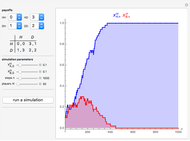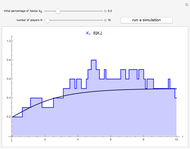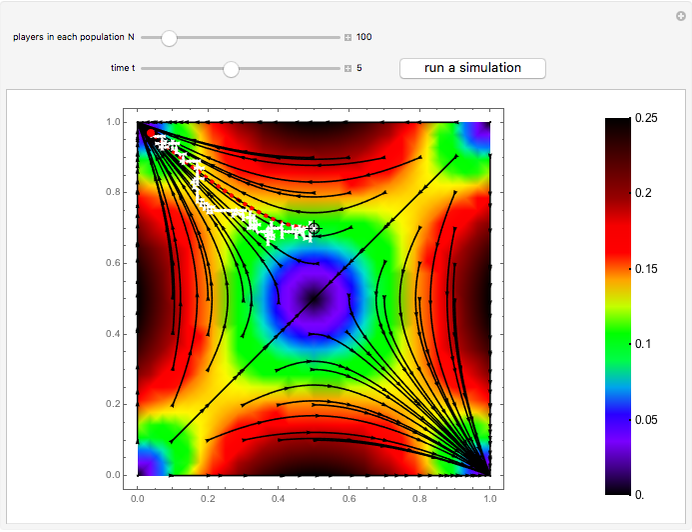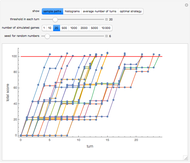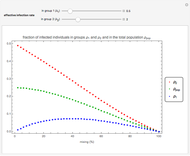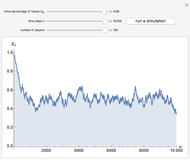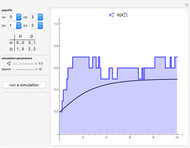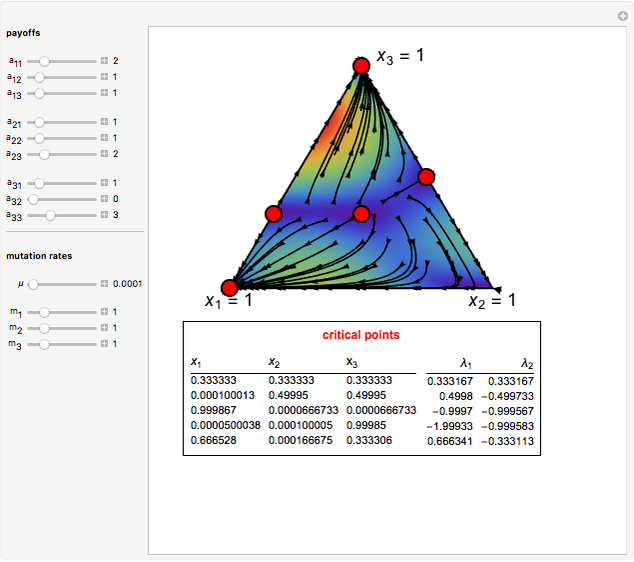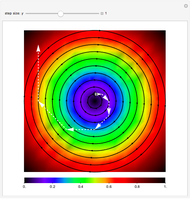Expected Dynamics of an Imitation Model in 2x2 Symmetric Games

Requires a Wolfram Notebook System
Interact on desktop, mobile and cloud with the free Wolfram Player or other Wolfram Language products.
The figure shows the actual (in blue) and expected (in black) proportion of  -strategists in a population of
-strategists in a population of  individuals who, at each iteration (of time length
individuals who, at each iteration (of time length  ), are randomly matched in pairs to play a symmetric 2×2 game. The two possible actions (or pure strategies) in the game are labeled
), are randomly matched in pairs to play a symmetric 2×2 game. The two possible actions (or pure strategies) in the game are labeled  and
and  . Thus, each individual in the population is either an
. Thus, each individual in the population is either an  -strategist or a
-strategist or a  -strategist. The payoffs of the game are
-strategist. The payoffs of the game are  ,
,  ,
,  , and
, and  (parameters), where, for instance,
(parameters), where, for instance,  denotes the payoff obtained by an
denotes the payoff obtained by an  -strategist when he plays with a
-strategist when he plays with a  -strategist.
-strategist.
Contributed by: Luis R. Izquierdo and Segismundo S. Izquierdo (May 2010)
Open content licensed under CC BY-NC-SA
Snapshots
Details
The first three Snapshots show the Hawk-Dove game in a population of  individuals (
individuals ( denotes the Hawk strategy and
denotes the Hawk strategy and  denotes the Dove strategy).
denotes the Dove strategy).
Snapshot 1: 
Snapshot 2: 
Snapshot 3: 
The last three Snapshots show the Prisoner's Dilemma game in a population of  individuals (
individuals ( denotes the cooperative strategy and
denotes the cooperative strategy and  denotes the defective strategy).
denotes the defective strategy).
Snapshot 4: 
Snapshot 5: 
Snapshot 6: 
Reference
[1] S. S. Izquierdo and L. R. Izquierdo, "Stochastic Approximation to Understand Simple Simulation Models," Journal of Statistical Physics, Dec 2012. dx.doi.org/10.1007/s10955-012-0654-z. Download preprint.
Permanent Citation








